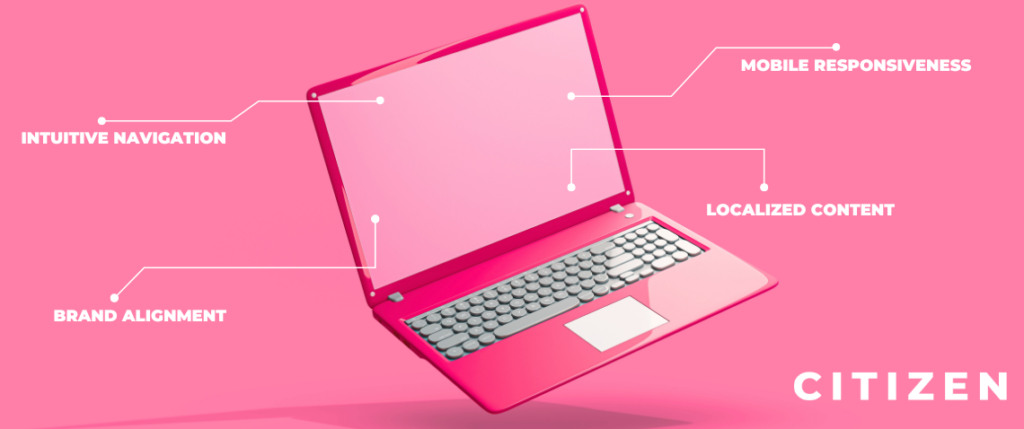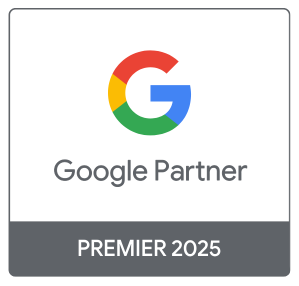Website design has never been more important than it is today.
Your senior living website design is just as important as your website content. But why?
The design of your website can tell a user a lot about your business and brand. A well-designed, well-curated website tells users that you care about your reputation and small details, as well as consistency across your digital platforms. Furthermore, your website design has a huge impact on your user experience. Users who can navigate and understand your website with ease are more likely to convert to qualified leads.
In this blog, we discuss the elements every senior living website should include and tips you can use to elevate the design of your website.
Summary:
- Your senior living website should include an About Us page, a Services & Amenities page, a Gallery page, a Floor Plans page, & a Contact Us page
- Users should be able to easily navigate your website, so make sure all the important information is laid out on the main page
- Don’t overcrowd your main pages with content—allow users to click in for more information as they wish
- Ensure your website is mobile-friendly/responsive
- Always follow accessibility regulations in your region
- Keep your website branding aligned with your business, social channels, & resources
What Should Be Included in My Senior Living Website?

Most websites for particular industries follow a similar framework. In senior living, the elements of your website and the information you publish on your website must cater to residents and their families. Along with a professionally branded home page, your website should include these pages:
- About Us: Provide an introduction to your senior living community, its mission, values, and a warm welcome to visitors.
- Services & Amenities: Highlight the range of services and amenities offered, such as accommodation options, dining, wellness programs, social activities, transportation, and any specialized care services.
- Photo/Video Gallery: Include high-quality images and videos showcasing various aspects of your community, such as living spaces, common areas, recreational activities, and events.
- Floor Plans: Display floor plans for different accommodation options, allowing potential residents to visualize their future living space.
- Contact Us: Provide clear and accessible contact information, including a phone number, email address, and physical address.
In addition to the pages above, we also recommend you include the following information on your website:
- Testimonials & Reviews: Feature positive testimonials and reviews from current residents and their families, building trust and credibility for your community.
- Virtual Tours: Offer virtual tours of the community, allowing remote visitors to explore the premises and get a feel for the environment.
- Request Information/Book a Tour: Include a simple form or call-to-action button that allows visitors to request more information or schedule a personal tour.
- Blog or News Section: Regularly update your website with informative and relevant blog posts or news articles related to senior living and healthcare.
- Events Calendar: Keep a calendar of upcoming events, activities, and social gatherings to showcase an active and engaging community.
- FAQ Section: Address frequently asked questions to help potential residents and their families find the information they need quickly.
- Staff Information: Introduce key staff members, including management, caregivers, and any other essential personnel, to personalize the experience for visitors.
- Healthcare & Wellness Information: Provide information about healthcare services, wellness programs, and any specialized care options available.
- Financial Information: Transparency in pricing and financial arrangements is essential; consider providing general cost details or guiding visitors to request personalized pricing information.
- Social Media Links: Connect your website to your community’s social media profiles to encourage engagement and interaction with your audience.
- Downloadable Brochures & Guides: Offer downloadable brochures and guides that provide comprehensive information about your community’s offerings and services.
And you must include the following information on your website:
- Compliance & Licensing: Clearly state your community’s compliance with relevant regulations and licensing requirements, instilling confidence in visitors.
- Privacy Policy: Include a privacy policy detailing how personal information is handled and protected on your website.
- Accessibility Features: Ensure that the website is accessible to all users, including those with disabilities, by incorporating features like alt-text for images and a clear color contrast.
Remember, a senior living website should be user-friendly, visually appealing, and provide valuable information. Consider the preferences and needs of seniors and their families when designing and organizing the content. A well-crafted website can significantly impact your community’s success in attracting potential residents and their families.
Design Elements for Strong Websites
The design of your website is just as important as the content and framework. Your website should align with your brand, but it should also be easy to navigate and intuitive for the user.
Think about your local grocery store. How did they lay out the aisles? Are you able to start at one end of the store and pick up all your items as you move to the other end? Or do you find yourself wandering aimlessly hoping to find an employee to help?
If the user is the customer and your website is the grocery store, you want to give them the path of least resistance to get what they want and what they need, pay, and check out. Here’s an example of poor design choices on a website:

Clean & Intuitive Navigation
Seniors and their families need an easy and seamless way to find information about your community. Your website should be clearly laid out and the information should be easy to understand. Use your navigation bar to highlight the most important information, such as Floor Plans and Services, and then add subcategories to avoid overwhelming the main pages.
As you know, it’s not uncommon that those who are searching for a senior living community are not thrilled with the task as a whole. By considering both the needs and emotions of your users, you can design your website to be effortless to navigate and easy to understand.
Responsive & Mobile-Friendly Design
65% of people 65 years and older, as well as 98% of people 18 to 45 years old, own a smartphone. It is highly likely that your target audience is searching for your services through their mobile device.
A responsive and mobile-friendly website ensures that your site looks great and functions well, regardless of the device used. Ensure your website can be enlarged and easy to tap through various pages. The easier your website is to use and understand, the more likely it is to convert users.
Engaging Visuals & Imagery
Pictures speak louder than words, and this holds true for senior living websites, too. High-quality images and videos of your community, amenities, and happy residents create an emotional connection with visitors. They can envision themselves living there and build trust in your senior living community.
The more real imagery you can use, the better. By this, we mean photos of your actual residents, staff, families, service, amenities, features, and environment. It adds another level of personalization and credibility for you and your community.
Readable Fonts & Colour Contrast
Your residents and their families may have vision issues, and it is both considerate and required (to a certain degree) to ensure your website is fully accessible. This includes readable fonts and suitable colour contrast. Opt for clear, legible fonts and contrast them well against the background to ensure all visitors can easily read the text on your website.
Always ensure that you’re following the laws and standards for your region.
Implementing SEO for Senior Living Websites
Once you have a great website, you should implement SEO strategies to drive organic traffic to your website. A website that is optimized for search engines like Google will rank higher on the search results page when people are searching for senior living communities. Here are some basic SEO strategies to implement into your website content.
Keyword Research
To attract potential residents, you need to understand what they’re searching for online. Keyword research helps you identify the phrases and terms that seniors and their families use when looking for senior living options. By using these keywords strategically, you can increase your website’s visibility on search engines.
On-Page Optimization
Once you’ve got your keywords, it’s time to optimize your website’s content. Incorporate relevant keywords into your page titles, meta descriptions, headings, and content. This will signal to search engines that your website is a reliable source of information for senior living, boosting your rankings.
Local SEO Strategies
Many seniors prefer to stay close to their loved ones or familiar places. Local SEO tactics like optimizing your Google My Business profile and ensuring consistent information across local directories help seniors find your community when they’re searching for nearby options.
Benefits of a Great Senior Living Website
Increased Credibility and Trust
A well-designed website instills trust in potential residents and their families. A professional, modern website reflects the quality of your senior living community and creates a positive first impression.
Enhanced User Experience
User experience is the heart of any successful website. By offering an easy-to-navigate website with relevant and helpful information, you’ll keep visitors engaged and encourage them to learn more about your community.
Higher Conversion Rates
The ultimate goal of your website is to convert visitors into leads. A well-designed website, combined with effective SEO, attracts the right audience and increases the likelihood of inquiries and potential move-ins.
So, Why Should You Care?
Studies have shown that well-designed websites can experience up to a 200% increase in conversion rates compared to poorly designed ones. Investing in your website’s design pays off in the form of more inquiries and, ultimately, more residents.
Websites with engaging visuals and readable fonts have been found to keep visitors on the page for longer periods. This increased engagement can lead to more time spent learning about your community and a higher likelihood of taking the next step toward residency.
Now What?
Designing a senior living website that converts is a powerful tool for showcasing your community and attracting potential residents. A user-friendly website with engaging visuals, strong SEO, and valuable content can make all the difference. By investing in your website, you invest in the future of your senior living community – ensuring a steady stream of happy residents for years to come.





